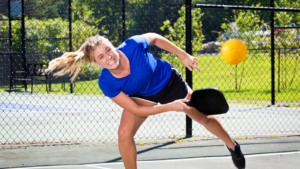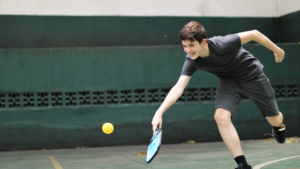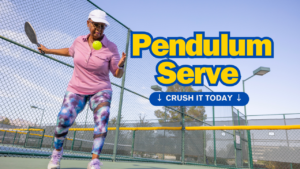Pickleball enthusiasts around the world know the thrill and excitement of the game. The rhythmic volleying, the strategic placement, and the adrenaline rush that comes with every slam of the paddle – it’s a sport that has captured the hearts of many. Yet, amidst this sea of agile players, there exists a formidable class known as the “bangers” – those players who possess unrelenting power, seemingly unstoppable in their ability to overpower opponents. But fear not, fellow pickleball aficionados, for in this article, we will unveil a trove of defensive strategies aimed at taming the bangers, turning their raw force against them, and restoring equilibrium to the court. So, gear up, prepare your paddles, and let’s delve into the world of defensive pickleball strategies.
Table of Contents
- Taming the Bangers: Defensive Pickleball Strategies
- Outsmarting the Opponent Through Shot Placement
- Safeguarding the Court: Positioning for Success
- Mastering the Art of Soft Shots: Effective Dinks and Drops
- The Power of Anticipation: Reading Your Opponent’s Shots
- Unlocking Defensive Weaponry: The Lob and Block Tactics
- Q&A
- The Way Forward
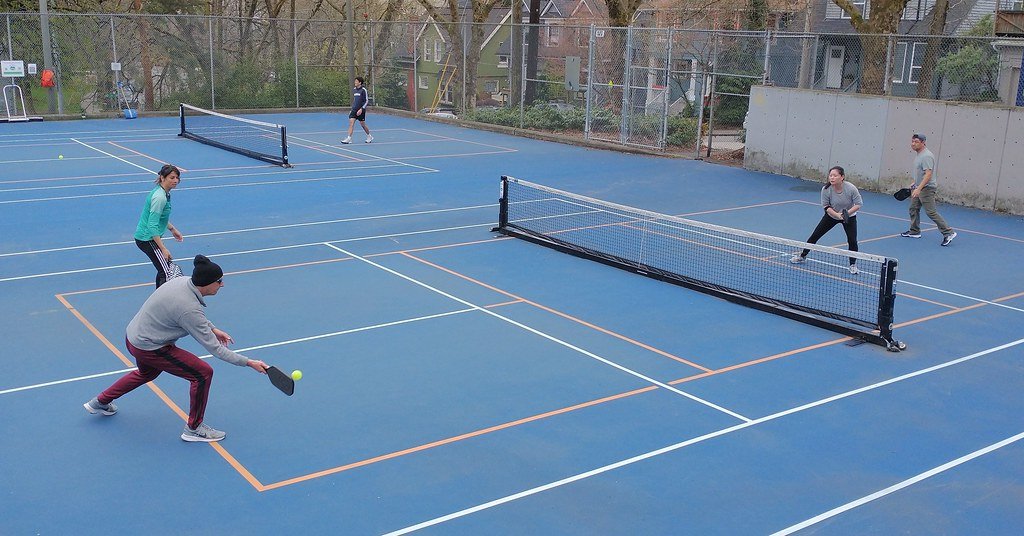
Taming the Bangers: Defensive Pickleball Strategies
Playing defense in pickleball can be a challenging task, especially when facing opponents with powerful shots. To level the playing field, it’s crucial to develop effective defensive strategies that can help you handle those fast and aggressive shots. Here are some invaluable tips to help you tame the bangers on the pickleball court:
1. Stay low and be ready: Adopting a low and athletic stance will not only give you better balance but also enable you to react quickly to incoming shots. Be on your toes and anticipate the movements of your opponents, keeping your body in a position to swiftly move in any direction.
2. Master the art of soft shots: Utilizing soft shots is a great way to neutralize aggressive opponents. Aim for the kitchen or drop shots, placing the ball near the net and forcing your opponents to make difficult shots. This will buy you time to regain control of the rally and potentially force an error.
3. Work on your precision: Accuracy is key when facing hard-hitting bangers. Rather than attempting to match their power, focus on placing the ball precisely in the corners of the court or at their feet, making it difficult for them to execute their powerful shots. By strategically placing the ball, you can force them into making mistakes or weaker returns.
Remember, defensive strategies are essential in pickleball, and by using a combination of these techniques, you can successfully counter the bangers and turn the tide of the game in your favor. Stay calm and composed, and don’t let their power intimidate you—instead, channel it into your defensive gameplay.
Outsmarting the Opponent Through Shot Placement
Shot placement is the key to outsmarting your opponent on the tennis court. By strategically placing your shots, you can control the game and keep your adversary guessing. One effective method is using the element of surprise to catch your opponent off guard.
Consider employing a mix of cross-court shots and down-the-line shots. This unpredictable pattern can disrupt your opponent’s rhythm and force them to constantly readjust their positioning. Additionally, varying the pace and spin of your shots adds another layer of complexity to your game plan. A combination of powerful shots and well-placed drop shots can keep your opponent on their toes and give you the upper hand.
Another strategy to consider is targeting your opponent’s weaknesses. Pay close attention to their movement, reach, and preferred shot selection. Exploit any weaknesses you identify by consistently directing the ball towards these areas. Whether it’s a weak backhand or slow footwork, relentlessly targeting those weakness will make it difficult for your opponent to recover.
Mastering the art of shot placement requires focus, practice, and adaptability. Keep in mind that every opponent is unique and may require different tactics. Embrace the challenge and constantly analyze your opponent’s game to stay one step ahead. Remember, the beauty of shot placement lies in its ability to outsmart your opponent and dictate the flow of the game. So go out there, keep them guessing, and seize control of the court.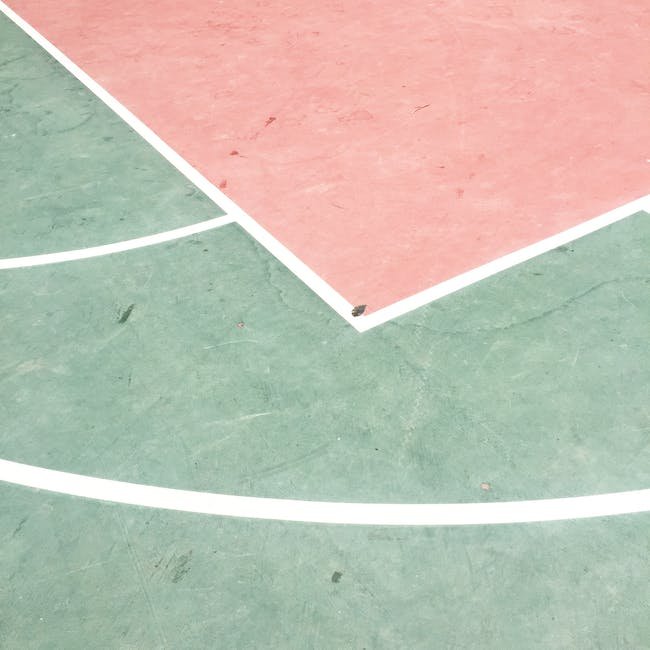
Safeguarding the Court: Positioning for Success
Ensuring the well-being and security of our court is crucial for its smooth functioning and the integrity of the justice system. To position ourselves for success, we must implement robust safeguards that protect both our physical and digital environments. Here are some key steps we can take to strengthen our court’s security:
- Enhance Physical Security: Implementing state-of-the-art access control systems, surveillance cameras, and secure entrances helps to protect our court premises from unauthorized access and potential threats. Regular security assessments and drills can help identify vulnerabilities and ensure our response protocols are effective.
- Secure Data and Systems: In today’s digital era, protecting sensitive information is paramount. Implementing secure networks, firewalls, and encryption technologies safeguard our court’s digital infrastructure from cyber threats. Regular security audits and staff training on data protection best practices contribute to maintaining a resilient defense against potential intrusions.
- Establish Emergency Response Plans: Crafting well-defined emergency response plans that include evacuation procedures, communication protocols, and coordination with local law enforcement is crucial. Regularly reviewing and updating these plans promotes preparedness and ensures a prompt and effective response in case of emergencies.
- Cultivate a Security Culture: Instilling a strong security culture among our court personnel is vital. Conducting security awareness programs, training sessions, and workshops helps to foster a sense of responsibility and awareness among all employees. Encouraging a proactive reporting system for potential security risks and maintaining open lines of communication further strengthens our court’s security posture.
By proactively implementing these measures, we can successfully safeguard our court and uphold the principles of justice that rely on a secure and well-protected environment.
Mastering the Art of Soft Shots: Effective Dinks and Drops
When it comes to table tennis, sometimes the key to success lies in mastering the art of soft shots. The ability to execute well-placed dinks and drops can give you a considerable advantage over your opponent, allowing you to control the rhythm and momentum of the game. Here are some essential tips to help you add finesse to your shots and take your game to the next level:
- Focus on Technique: Start by perfecting your technique. Keep your grip relaxed to ensure a softer touch on the ball. Maintain a low stance, shifting your weight from one foot to another to maintain balance. Bend your knees slightly and use your waist to generate power without sacrificing control.
- Subtle Spin: Soft shots are excellent for applying spin to confuse your opponent. Experiment with varying degrees of backspin and topspin to keep your shots unpredictable. A well-placed backspin dink can force your adversary to hit the ball into the net, while a topspin drop can catch them off guard and leave them scrambling to respond.
- Patience is Key: Soft shots are not about brute force but precision and timing. Develop patience and learn to wait for the right moment to execute your dinks and drops. Look for opportunities when your opponent is slightly off balance or out of position, and exploit their weaknesses with a well-placed soft shot.
With practice and dedication, you can master the art of soft shots and incorporate them seamlessly into your table tennis repertoire. Remember, a perfectly executed dink or drop can be a game-changer, putting you in control of the match and leaving your opponents in awe of your finesse.
The Power of Anticipation: Reading Your Opponent’s Shots
Anticipating your opponent’s shots is a vital skill that can give you a significant advantage on the playing field. Being able to read your opponent’s moves allows you to strategize and react accordingly, staying one step ahead throughout the game. Here are a few key points to help you harness the power of anticipation:
- Observation is Key: Pay close attention to your opponent’s body language, positioning, and footwork. These subtle cues can provide valuable insight into their intentions and upcoming shots.
- Study Their Patterns: Notice any repetitive patterns or tendencies in your opponent’s shots. Are they favoring a specific corner? Do they often use a specific shot technique? Understanding their habits can make it easier to anticipate and counteract their moves.
- Stay on Your Toes: Anticipating your opponent’s shots requires mental agility and quick reflexes. By staying focused and alert, you’ll be able to react swiftly to their shots and improve your chances of successfully defending or counterattacking.
Mastering the power of anticipation takes practice and experience. By honing this skill, you’ll be able to not only react to your opponent’s shots effortlessly but also predict their next moves, giving you a significant edge in any game.
Unlocking Defensive Weaponry: The Lob and Block Tactics
Defensive strategies in sports have always played a crucial role in determining the outcome of a game. Among these strategies, the lob and block tactics have emerged as an ingenious way to outmaneuver opponents and score points effectively.
When it comes to the lob tactics, the key lies in precision and anticipation. By launching a high, arching shot, players can catch their opponents off guard and create scoring opportunities for their team. Executing this technique requires perfect timing and a keen understanding of the game’s flow. Not only does the lob confuse defenders, but it also allows attackers to exploit any vulnerabilities in the opposition’s defensive line.
On the other hand, the block tactics serve as a defensive shield against powerful shots from the opposition. This technique involves players positioning themselves strategically at the net, ready to intercept any incoming attacks. A well-executed block can not only halt the opponent’s scoring attempts but also turn the tide of the game in the defending team’s favor. It requires a combination of agility, strength, and instinct to anticipate and react to the opponent’s shots accurately.
- Key Elements of Lob Tactics:
- Precision and timing
- Catching opponents off guard
- Exploiting defensive vulnerabilities
- Key Elements of Block Tactics:
- Strategic positioning at the net
- Halting opponent’s attacks
- Turning the tide of the game
Unlocking the potential of these defensive weaponry, the lob and block tactics, can significantly impact the outcome of a game. Masters of these strategies harness their skills and techniques to dominate the field and outwit their opponents. So, whether you’re an aspiring athlete or a fan of the game, understanding and implementing these tactics can take your team’s performance to the next level.
Q&A
Q: What are some effective strategies for defending against aggressive shots in pickleball?
A: To counter aggressive shots in pickleball, it’s essential to focus on positioning and anticipation. By staying in the right place at the right time and reading your opponent’s shots, you can effectively neutralize their offensive power.
Q: How can I improve my reflexes and reaction time to defend against fast-paced shots?
A: Improving reflexes and reaction time in pickleball requires regular practice and drills. Engaging in exercises that focus on quick footwork, agility, and hand-eye coordination can help enhance your defensive abilities.
Q: Are there any specific techniques to reduce the power behind a hard-hitting shot?
A: Yes, there are several techniques that can be used to soften the impact of a hard-hitting shot. Implementing a softer grip, absorbing the shot with a cushioned paddle face, or employing a slice or block technique can effectively reduce the power behind an aggressive shot.
Q: How important is court positioning for defensive play in pickleball?
A: Court positioning is paramount for a strong defensive game in pickleball. By maintaining a balanced position between the kitchen line and baseline, players can better cover the court and react quickly to aggressive shots.
Q: Should I always react aggressively to offensive shots or focus more on controlled defense?
A: While it can be tempting to respond with aggressive shots, opting for controlled defense is often more effective in pickleball. Prioritizing controlled returns, strategic shot placement, and proper decision-making can help you regain control of the point and frustrate your opponent.
Q: How can I anticipate my opponent’s shots more effectively to improve my defensive game?
A: Improving shot anticipation in pickleball requires careful observation of your opponent’s body language, racket position, and footwork. By studying their patterns and tendencies, you can make more accurate predictions and position yourself for successful defensive plays.
The Way Forward
As we wrap up this exploration of defensive pickleball strategies, we hope that you have gained valuable insights into the art of “Taming the Bangers.” In a fast-paced game where power shots can be intimidating, we have shown you that defense is not just about reacting, but about developing a well-rounded game plan.
Throughout this article, we have delved into various techniques that will empower you to control the game from the backline. From the precision of the dinking game to the art of lobbing, we have revealed the secrets to a solid defensive foundation. Remember, it is not just your reaction time but also your strategic decision-making that will set you apart.
While the thrill of a perfectly executed offensive shot may garner applause from the crowd, there is something truly impressive about a player skillfully maneuvering their way out of seemingly impossible situations. The power of adaptation, anticipation, and a bit of finesse can be just as gratifying as a powerful smash.
But let us not forget that pickleball is a game of balance. While defensive strategies are crucial, one must not ignore the opportunity to seize control and turn the tables on opponents. An effective defensive player is one who possesses the versatility to transition seamlessly between defense and offense, throwing their challengers off-guard.
So, as you step onto the pickleball court armed with newfound knowledge, remember to embrace the art of taming the bangers. Utilize defensive strategies to disrupt the rhythm of aggressive opponents, showing them that you hold the keys to the game’s tempo. Stay patient, anticipate their moves, and with every precise flick of your paddle, you will leave them in awe.
Now is the time to hone your skills, practice your footwork, and perfect your timing. With dedication and perseverance, you will master the subtleties of defense in pickleball, transforming yourself into an unstoppable force.
So, gear up, pickleball warriors, and let the defensive battle begin. May your dinks be decisive, your lobs be lofty, and your opponents be forever in awe of your mastery over the bangers. Remember, defense may be the name of the game, but it is the artistry and finesse with which you wield it that will set you apart.
As an affiliate, my content may feature links to products I personally use and recommend. By taking action, like subscribing or making a purchase, you’ll be supporting my work and fueling my taco cravings at the same time. Win-win, right?
Want to read more? Check out our Affiliate Disclosure page.

